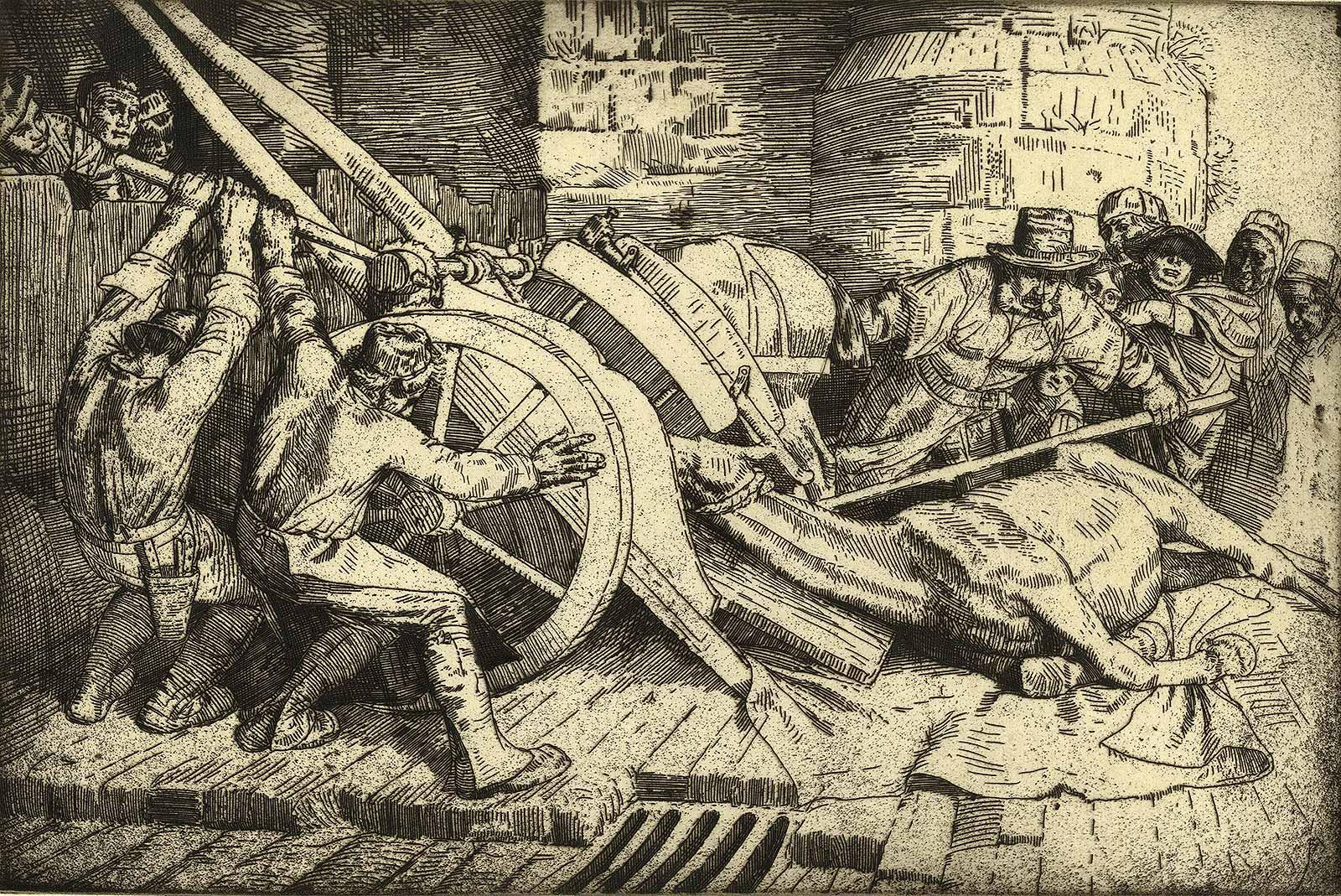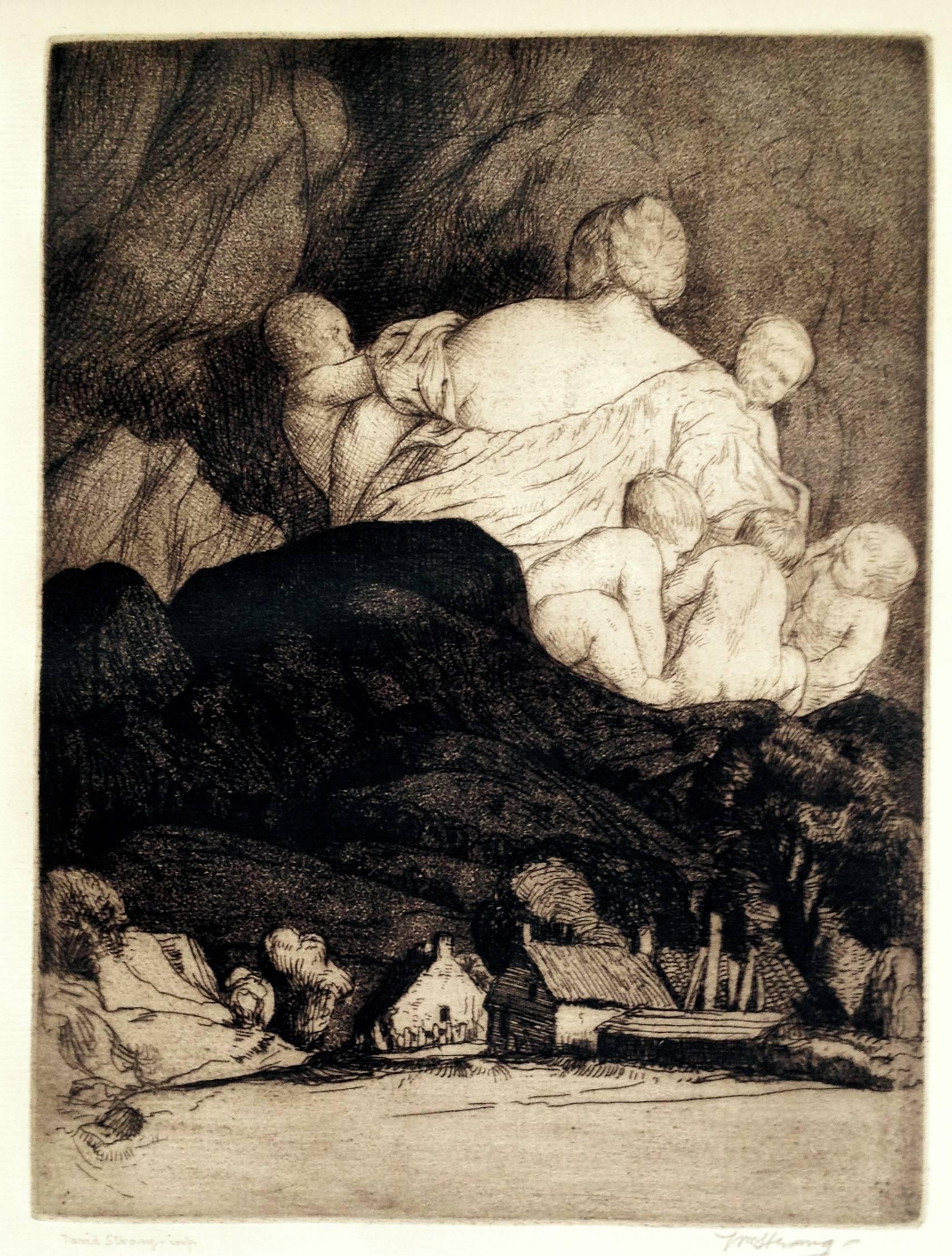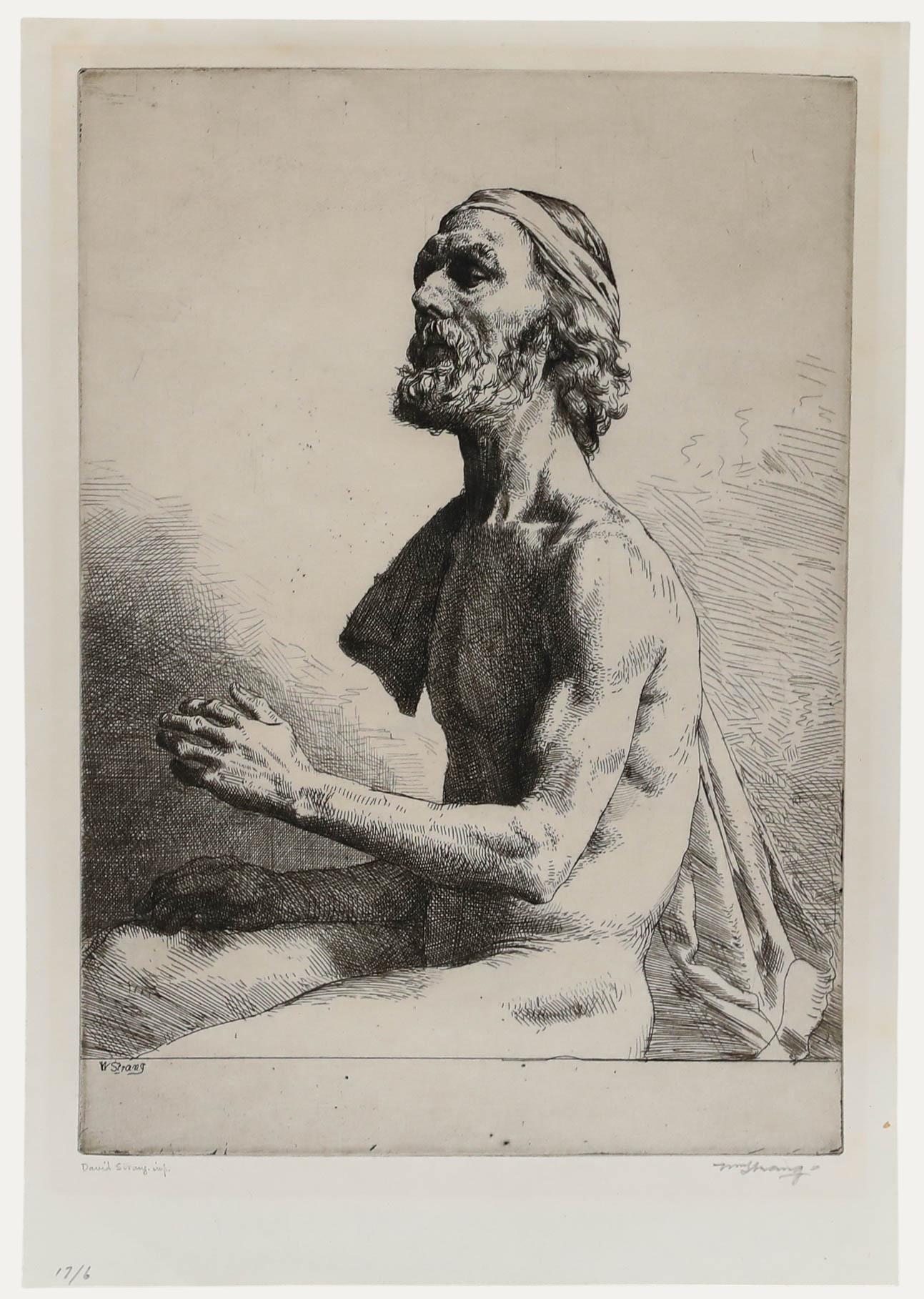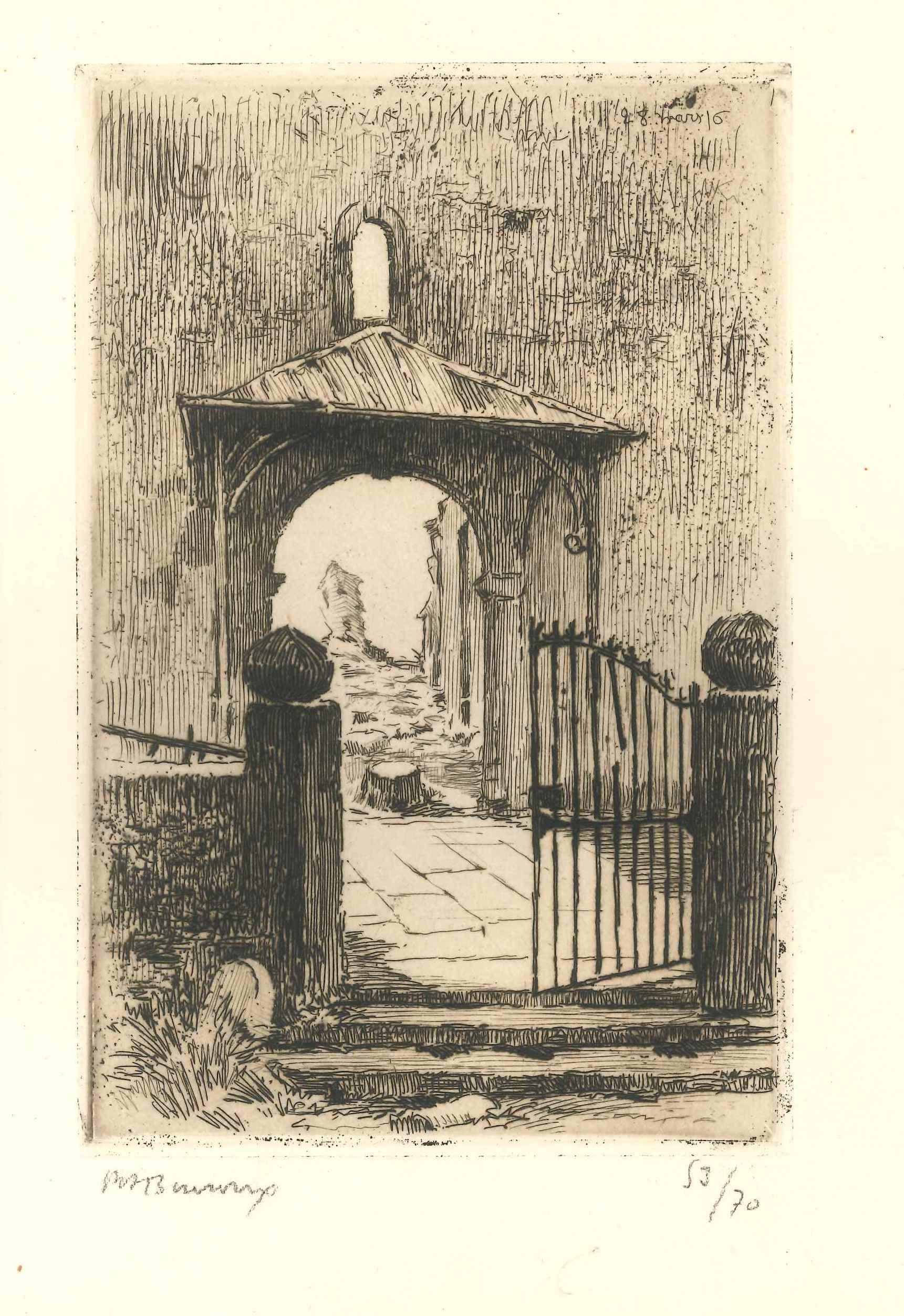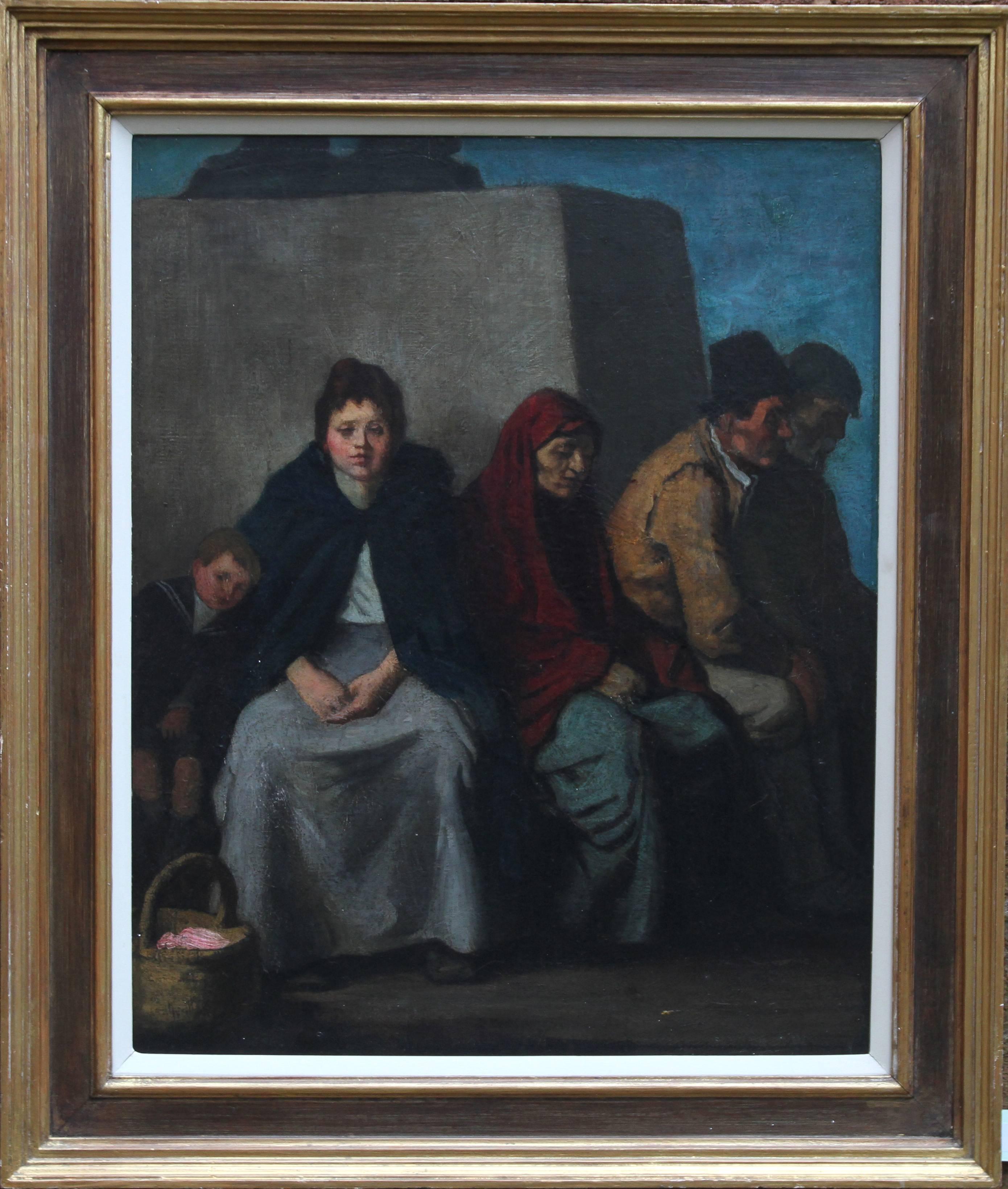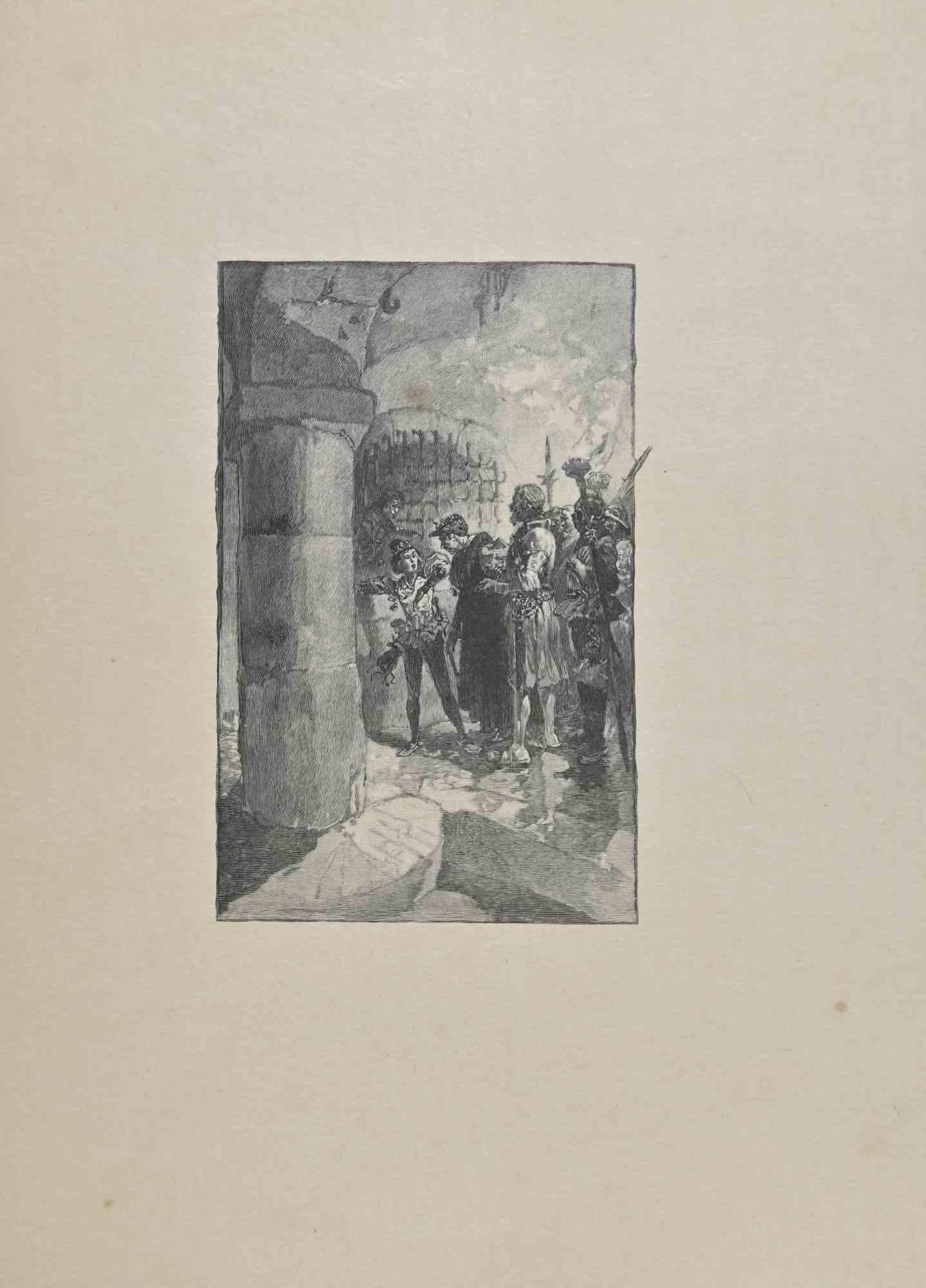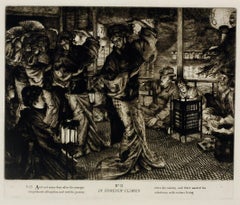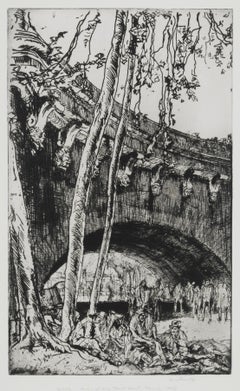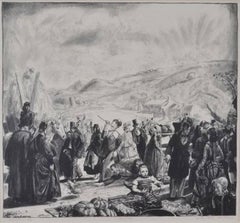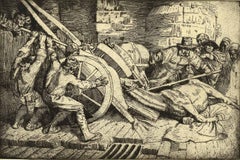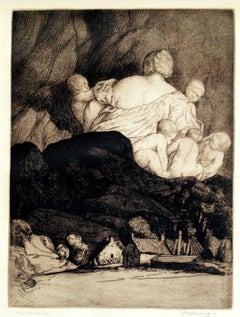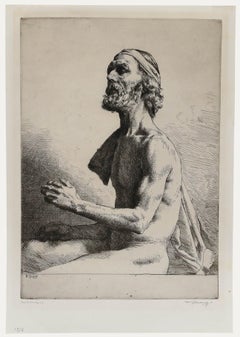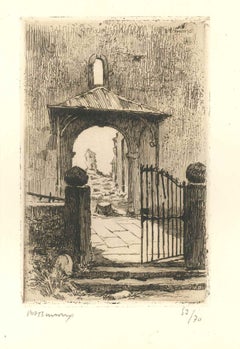Items Similar to The Gate of Hundred Sorrows
Want more images or videos?
Request additional images or videos from the seller
1 of 7
William Strang, R.A., R.E.The Gate of Hundred Sorrows1900
1900
$600
£457.66
€522.28
CA$843.76
A$926.04
CHF 486.65
MX$11,019.73
NOK 6,220.83
SEK 5,684.60
DKK 3,901.95
About the Item
The Gate of Hundred Sorrows
Etching, 1900
Signed in the plate lower right (see photo)
From: A Series of Thirty Etchings by William Strang, Illustrating Subjects from the Writings of Rudyard Kipling
Impressions are in the National Gallery, London, National Galleries of Scotland, LACMA, Carleton College, British Museum, Nelson Atkins Museum of Art, Fine Art Museums of San Francisco, Library of Congress, and National Gallery of Art (Washington).
Reference: Strang 1912, no. 390, only state
Condition: Mint
Image/Plate size: 6 x 7 15/16 inches
Sheet size: 13 3/8 x 16 7/7 inches
The Gate of the Hundred Sorrows
This story was first published in the Civil and Military Gazette on September 26th 1884, when Kipling was not yet nineteen, and collected in Plain Tales from the Hills in 1888, and in subsequent editions of this collection.
The tale is presented as a monologue by Gabral Misquitta, a half-caste opium addict, six weeks before his death. It describes the life of the opium den, and of the opium smokers, in the Coppersmith's Gully near the mosque of Wazir Khan. In the end, all life for them revolves around the 'black smoke'. There is nothing else
About William Strang:
William Strang (1859 - 1921): A Scottish etcher, lithographer and painter of portraits, figure studies and allegorical scenes, William Strang came to London in 1875 to study at the Slade School of Art. There he became the chief pupil and artistic heir of Alphonse Legros. By the age of thirty Strang had created over 180 original etchings, including portraits of such famous individuals as Kipling, Rider Haggard, Thomas Hardy, Legros, Seymour Haden and Lawrence Binyon. William Strang was elected an Associate of the Royal Academy in 1906 and a full Academician in 1921.
- Creator:William Strang, R.A., R.E. (1859 - 1921, British)
- Creation Year:1900
- Dimensions:Height: 6 in (15.24 cm)Width: 7.93 in (20.15 cm)
- Medium:
- Movement & Style:
- Period:
- Condition:
- Gallery Location:Fairlawn, OH
- Reference Number:Seller: FA125351stDibs: LU14015317682
About the Seller
5.0
Recognized Seller
These prestigious sellers are industry leaders and represent the highest echelon for item quality and design.
Gold Seller
Premium sellers maintaining a 4.3+ rating and 24-hour response times
Established in 1978
1stDibs seller since 2013
835 sales on 1stDibs
Typical response time: <1 hour
Associations
International Fine Print Dealers Association
- ShippingRetrieving quote...Shipping from: Akron, OH
- Return Policy
More From This Seller
View AllL'enfant prodigue: en pays etranger (The Prodigal Son: In Foreign Climes)
By James Jacques Joseph Tissot
Located in Fairlawn, OH
L'enfant prodigue: en pays etranger (The Prodigal Son: In Foreign Climes)
Etching, 1881
Unsigned (as usual for this state)
From: L'enfant prodigue, (The Prodigal Son, five plates)
Ed...
Category
1880s Impressionist Figurative Prints
Materials
Etching
L'enfant prodigue: en pays etranger (The Prodigal Son: In Foreign Climes)
By James Jacques Joseph Tissot
Located in Fairlawn, OH
L'enfant prodigue: en pays etranger (The Prodigal Son: In Foreign Climes)
Etching, 1881
Unsigned (as usual for this state)
From: L'enfant prodigue, (The Prodigal Son, five plates)
Ed...
Category
1880s Impressionist Figurative Prints
Materials
Etching
Arch of the Pont Neuf, Paris
By Sir Frank Brangwyn
Located in Fairlawn, OH
Arch of the Pont Neuf, Paris
Etching on heavy wove paper, 1923
Signed in pencil lower right (see photo)
From: Brangwyn Portfolio (12 original etchings and thr...
Category
1920s Post-Impressionist Landscape Prints
Materials
Etching
The Irish Fair
By George Wesley Bellows
Located in Fairlawn, OH
Irish Fair
Lithograph, 1923
Signed and numbered in pencil by the artist (see photo)
Titled "Irish Fair" by the artist in pencil
Edition: 84
Housed in an archival frame with acid free matting (see photo)
Provenance:
Estate of the artist, Bellows Family Trust
H.V. Allison & Company (label)
Private Collection, Columbus
References And Exhibitions:
Reference: Mason 153
Note: An illustration commissioned by The Century Company for Don Byrne's novel The Wind Bloweth
Image: 18 7/8 x 21 3/8"
Frame: 29 1/2 x 30 1/2"
“Eleven on a hot July morning, and the little town...
Category
1920s Ashcan School Figurative Prints
Materials
Lithograph
The Mouth of Honey
By George Wesley Bellows
Located in Fairlawn, OH
The Mouth of Honey
Lithographic crayon and mixed media on paper mounted to support paper
Initialed by the artist "GB" bottom center on image. (see photo)
Titled in pencil in bottom m...
Category
1920s Ashcan School Drawings and Watercolor Paintings
Materials
Crayon
Keying Up - The Court Jester
By William Merritt Chase
Located in Fairlawn, OH
Keying Up - The Court Jester
Etching with drypoint, 1879
Signed in the plate lower left corner (see photos)
Proof before engraved title and engraved names
Printed on thin light golden Japanese tissue paper
In the final state, with engraved titled and typeface engraved artist’s signature below the image
Condition: excellent
Plate size: 6-5/8 x 4-1/4"
According to Pisano, this image was very popular during Chase’s life. It is based on his famous painting, Keying Up-The Court Jester, in the collection of the Pennsylvania Academy of Fine Arts. The painting was created in Munich during the artist’s studies there. It was exhibited in the 1876 Centennial Exhibition in Philadelphia where it won a Medal of Honor and helped establish the artist’s reputation as a leading American painter.
Chase, always conscious of self promotion, created the etching and had numerous impressions printed. He sold them for a modest price to increase his fame. The etching was later published in Sylvester R. Koehler, American Art Review, September 1878. It was for this American Art Review printing that the engraved titled and type face signature below the image were added to the plate.
This example was part of a group of impressions that came down in the Chase family via his daughter Dorothy Bremond Chase, his third daughter. They were acquired at auction in a single auction lot, housed in a paper board folder. The consignor was Associated American Artist’s as they were liquidating their stock prior to closing the gallery.
Dorothy was the subject of Chase’s painting, My Little Daughter Dorothy. C. 1894, in the collection of the Detroit Institute of Arts as well as numerous other portraits of her.
Reference: Pisano/Bake, Volume 1, Pr. 3, illustrates the rare 1st state, this being a 2nd state before any other the engraved title and Chase's name in the bottom margin which are found in the third state.
Artist bio in file (Chase)
In 1883 Chase was involved in the organization of an exhibition to help raise funds for a pedestal for the Statute of Liberty. The exhibition featured loans of three works by Manet and urban scenes by the Italian Impressionist Giuseppe de Nittis. Both artists influenced Chase's Impressionistic style that gave rise to a series of New York park scenes. It is also thought that he was influenced by John Singer Sargent's In the Luxembourg Gardens (1879) which was exhibited in New York at this time. Indeed, Chase had met Sargent in Europe in 1881, the two men becoming lifelong friends with Sargent painting Chase's portrait in 1902.
On another European trip in 1885, Chase met James McNeill Whistler in London. While Whistler had a reputation for being difficult, the two artists got along famously and agreed to paint one another's portrait. Eventually, however, Whistler's moods began to grate with Chase who wrote home stating "I really begin to feel that I never will get away from here". For his part, Whistler criticized Chase's finished portrait and, according to Hirshler, "complained about Chase for the rest of his life". While no record exists of Whistler's portrait of Chase; Chase's portrait of Whistler remains a well-known piece in his oeuvre.
In 1887 Chase married Alice Gerson, the daughter of the manager of a lithography company. Though some fifteen years his junior (Chase was 37), he had known Alice for some time through her family's devotion to the arts. The pair, who would enjoy a happy marriage with Alice in full support of her husband's career, settled initially in Brooklyn where their first child was born. The couple would parent six daughters and two sons and it was only his family that could rival his devotion to his art. Indeed, Chase often combined his two loves by painting several portraits of his wife and children in Brooklyn parks before the couple relocated to Manhattan.
Later Period
Between 1891 and 1902, Chase and his family spent their summers at a purpose-built home and studio in Shinnecock Hills, a close suburb of the upmarket town of Southampton on the south shore of Long Island (roughly 100 miles east of New York). Chase set up, and taught two days a week, at the nearby Shinnecock Hills Summer School of Art which benefitted from the financial backing of local art collectors. It was at Shinnecock that Chase, taken in by the region's striking natural surroundings, painted several Impressionistic landscapes. As Bettis put it, "There, among the dunes, in the bright sunlight and sea air his painterly impulse was given free sway, and he produced some of his freest and loveliest work". His passion for the area was so felt he even gave his daughter Hazel the middle name of Neamaug, in honor of the rich Native American history of Shinnecock. Chase was equally focused on the students that came to the School and who he encouraged to paint in the modern plein air style favored by the French Impressionists.
Although Chase was making a name for himself as an Impressionist, he never abandoned his commitment to the sombre tones and academic tropes he had learned in Munich, though these he reserved for his portraits, and for his series of striking still lifes featuring dead fish. Chase was in fact a successful society portraitist - he painted fashionable women for a fee of $2,000 - and would paint his students as "samples" which he then donated to leading art institutions (such as Lady in Black (1888) which he donated to the Metropolitan Museum in 1891).
In 1896, facing financial difficulties, Chase flirted with the idea of giving up his teaching in New York and traveled with his family to Madrid where he developed a passion for bullfighting. Chase returned however to Shinnecock in June to teach his yearly summer art class, and in the fall of that year, established his own art school in Manhattan: the Chase School which was modelled on the Académie Julian in Paris. Chase lacked business savvy, however, and the Chase School lasted only two years before it was placed under new management. It continued as the New York School of Art (changed to Parsons School of Design starting 1941) with Chase as head the School for eleven more years. Chase also taught during this period at the Pennsylvania Academy of Fine Arts.
In 1902, following the premature death of his friend John Twachtman, Chase was invited to join the Ten American Painters group (who included amongst its members, Frank Weston Benson, Thomas Wilmer Dewing...
Category
1870s American Impressionist Figurative Prints
Materials
Etching
You May Also Like
Knackers
By William Strang, R.A., R.E.
Located in New Orleans, LA
Binyon 232 - A fine impression in fine condition in an edition of 55 signed and inscribed by the artist.
Strang was a prolific printmaker and across his lifetime produced over 750 o...
Category
1890s Modern Figurative Prints
Materials
Etching
$221 Sale Price
25% Off
Mother Earth
By William Strang, R.A., R.E.
Located in New York, NY
William Strang (1859-1921), Mother Earth, 1897, etching, drypoint, aquatint ); signed in pencil lower right, and signed by the printer David Strang and...
Category
1890s Symbolist Figurative Prints
Materials
Drypoint, Etching, Aquatint
William Strang RA (1859-1921) - Etching, Life Model in the Studio
By William Strang, R.A., R.E.
Located in Corsham, GB
An original etching by William Strang depicting a male life model in the artist's studio. Signed in plate and signed in pencil to the lower margin. Further inscribed to the lower lef...
Category
Late 19th Century Portrait Prints
Materials
Etching
The Gate - Original Etching by Paul Adrien Bouroux - First Half of XX Century
By Paul-Adrien Bouroux
Located in Roma, IT
The Gate is an original artwork realized by the French artist Paul Adrien Bouroux in the first half of the XX Century.
Original Etching on paper. Passepartout included (cm 43 x 32)...
Category
Early 20th Century Modern Figurative Prints
Materials
Etching
At the Foot of the Statue - Scottish art Impressionist figurative oil painting
By William Strang, R.A., R.E.
Located in Hagley, England
A fine large oil painting by Scottish listed artist William Strang. This is a super evocative oil on canvas which depicts a family at "The Foot of the Statue". It was exhibited in 1904 in Bradford exhibition of fine arts lent by L W Hodson of Wolverhampton who was a patron of his work. This is a fine example of an early 20th century Scottish oil with good subject. It is a good size and signed. This wouldn't be out of place in Kelvingrove Gallery in Glasgow.
Signed lower left.
Provenance. Bradford Art Gallery 1904.
Sotheby 19th June 2002 Guide price £20000-30000GBP.
Condition. Oil on canvas. Image size 30 inches by 25 inches and in excellent condition.
Housed in a fine period frame, 39 by 34 inches framed and in good condition.
William Strang (1859-1921) was born at Dumbarton, the son of Peter Strang, builder, and educated at the Dumbarton Academy. He worked for fifteen months in the counting-house of a firm of shipbuilders before going to London in 1875 when he was sixteen. There he studied art under Alphonse Legros at the Slade School for six years. Strang became assistant master in the etching class, and had great success as an etcher. He was one of the original members of the Royal Society of Painter-Etchers, and his work was a part of their first exhibition in 1881. Some of his early plates were published in The Portfolio and other art magazines. He worked in many manners, etching, dry point, mezzotint, sand-ground mezzotint, and burin engraving. Lithography and wood-cutting were also used by him to create pictures. He cut a large wood engraving of a man ploughing, later published by the Art for Schools Association. A privately produced catalogue of his engraved work contained more than three hundred items. Amongst his earlier works were Tinkers, St. Jerome, A Woman Washing Her Feet, An Old Book-stall with a Man Lighting His Pipe from a Flare, and The Head of a Peasant Woman on sand-ground mezzotint. Later plates such as Hunger, The Bachelor's End and The Salvation Army were also important. Some of his best etchings were done as series—one of the earliest, illustrating poet William Nicholson's Ballad of Aken Drum, is remarkable for clear, delicate workmanship in the shadow tones, showing great skill and power over his materials, and for strong drawing. Another praised series was The Pilgrim's Progress, revealing austere sympathy with John Bunyan's teaching. Samuel Taylor Coleridge's Ancient Mariner and Strang's own Allegory of Death and The Plowman's Wife, have served him with suitable imaginative subjects. Some of Rudyard Kipling's stories were also illustrated by him, and his likeness of Kipling was one of his most successful portrait plates. Other etched portraits included those of Ernest Sichel and of J.B. Clark, with whom Strang collaborated in illustrating Baron Munchausen...
Category
Early 1900s Impressionist Figurative Paintings
Materials
Oil
Before The Gate - Lithograph by Hégésippe Moreau - 1838
Located in Roma, IT
Before The Gate is a Lithograph on paper realized by Hégésippe Moreau in 1838.
The artwork is in good condition.
Hégésippe Moreau (1810-1838) was a French lyric poet. The romantic ...
Category
1830s Modern Figurative Prints
Materials
Lithograph
More Ways To Browse
Antique Nelson
Antique Mosque
Antique English Gate
William Lawrence
Opium Smoker
Romare Bearden Mother And Child
Rudolf Hausner
Rufino Tamayo Mixografia
Salvador Dali 1976
Salvador Dali Adam And Eve
Salvador Dali Autumn
Salvador Dali Centaur
Salvador Dali Christ
Salvador Dali Don Quixote
Salvador Dali Dragon
Salvador Dali Lithograph Don Quixote
Salvador Dali Solomon
Sante Graziani
